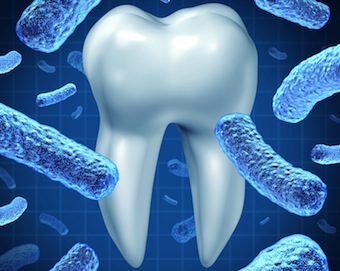Research: Sequencing Harmless Oral Bacterium May Help To Unravel a Mystery
According to a recent news release, scientists have pieced together sections of DNA from 12 individual cells to sequence the genome of a bacterium known to live in healthy human mouths.
With this new data about a part of the body considered “biological dark matter,” the researchers were able to reinforce a theory that genes in a closely related bacterium could be culprits in its ability to cause severe gum disease. More than 60% of bacteria in the human mouth refuse to grow in a laboratory dish, meaning they’ve never been classified, named or studied.
As the release states, the newly sequenced bacterium, Tannerella BU063, is among those that to date have not successfully been grown in culture, and its genome is identified as “most wanted” by the Human Microbiome Project.
The federal Human Microbiome Project aims to improve research about the microbes that play a role in health and disease. Those 12 cells of BU063 are a good example of the complexity of life in the mouth: They came from a single healthy person but represented eight different strains of the bacterium.
BU063 is closely related to the pathogen Tannerella forsythia, a bacterium linked to the gum disease periodontitis. Despite being “cousins,” this research revealed that they have clear differences in their genetic makeup.
Those genes lacking in BU063 but present in forsythia — meaning they’re a likely secret behind forsythia’s virulence — are now identified as good targets for further study, researchers say.
The research is published in the journal PLOS ONE. “One of the tantalizing things about this study was the ability to do random searches of other bacteria whose levels are higher in periodontitis,” said Clifford Beall, research assistant professor of oral biology at The Ohio State University and lead author of the study. “We looked for genes that were present in these bacteria and forsythia and not in BU063. There is one particular gene complex in a whole list of these periodontitis-related bacteria that could be involved with virulence.”
According to Beal, “We think some of the gene differences we’ve found in this study are important, but it’s still not clear what all these genes do, meaning we still don’t know why certain bacteria in periodontitis are pathogenic in the first place. Basically, the circumstances surrounding periodontitis aren’t very well understood.”
The research was supported by the National Institute of Dental and Craniofacial Research and the National Human Genome Research Institute.
SPEAR STUDY CLUB
Join a Club and Unite with
Like-Minded Peers
In virtual meetings or in-person, Study Club encourages collaboration on exclusive, real-world cases supported by curriculum from the industry leader in dental CE. Find the club closest to you today!

By: Cody Lopez
Date: February 17, 2014
Featured Digest articles
Insights and advice from Spear Faculty and industry experts



